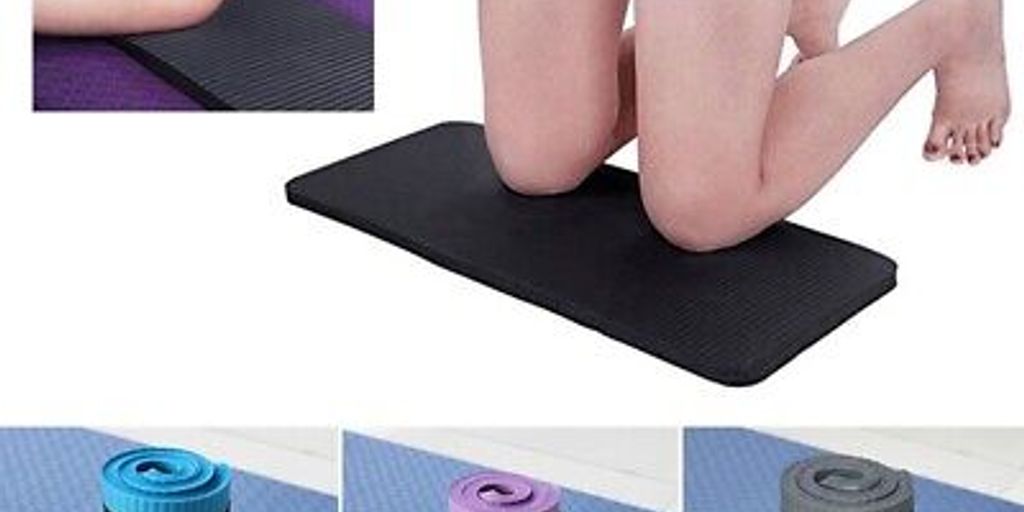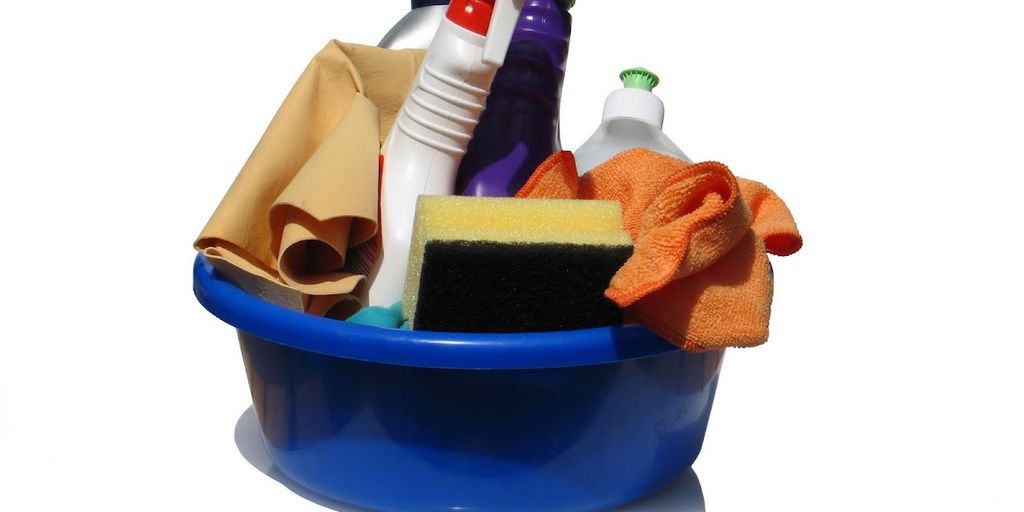
How to Prevent Your Yoga Mat from Being Slippery: Tips and Tricks
A slippery yoga mat can turn a relaxing practice into a frustrating experience. Whether you're a beginner or an experienced yogi, maintaining a firm grip on your mat is essential for both safety and performance. In this article, we'll explore various tips and tricks to prevent your yoga mat from being slippery, ensuring you can focus on your practice without any distractions.
Key Takeaways
- Understanding the reasons behind a slippery yoga mat can help you take effective preventive measures.
- Choosing the right yoga mat with proper material and thickness can significantly enhance grip.
- Regular cleaning and maintenance are crucial for keeping your yoga mat in good condition.
- Using accessories like yoga towels, grip sprays, and non-slip pads can provide extra traction.
- Practicing proper techniques and storing your mat correctly can further reduce slippage and extend its lifespan.
Understanding Why Your Yoga Mat Becomes Slippery
Material and Texture
The material and texture of your yoga mat play a significant role in its grip. Mats made from PVC or TPE often have different levels of stickiness compared to natural rubber mats. Choosing the right material can greatly influence how slippery your mat becomes over time.
Sweat and Moisture
Sweat and moisture are common culprits for a slippery yoga mat. When you sweat, the moisture can create a slick surface, making it difficult to maintain poses. Using a towel or rug can help absorb the moisture and improve grip.
Wear and Tear
Over time, wear and tear can degrade the surface of your yoga mat, making it less effective at providing grip. Regular use can cause the material to break down, leading to a slippery surface. It's essential to monitor the condition of your mat and replace it when necessary.
Preventing slipperiness involves understanding the factors that contribute to it, such as material, moisture, and wear. By addressing these issues, you can maintain a better grip during your practice.
Choosing the Right Yoga Mat for Better Grip
Material Options
Selecting the right material for your yoga mat is crucial for ensuring a good grip. Natural rubber and polyurethane are excellent choices as they offer superior traction compared to PVC mats. Additionally, eco-friendly materials like jute and cork can provide a non-slip surface while being kind to the environment.
Thickness and Texture
The thickness and texture of your yoga mat can significantly impact its grip. A mat that is too thick may cause instability, while one that is too thin might not provide enough cushioning. Aim for a mat with a medium thickness, around 4-6mm, for optimal balance. Textured surfaces can also enhance grip by preventing your hands and feet from slipping during poses.
Brand Recommendations
When it comes to brand recommendations, some names stand out for their quality and grip. Manduka, Liforme, and Jade Yoga are well-known for producing mats with excellent traction. These brands offer a variety of options to suit different needs, from travel-friendly mats to those designed for hot yoga sessions.
Investing in a high-quality yoga mat can make a significant difference in your practice, providing the stability and support you need to perform poses confidently.
Proper Cleaning Techniques to Maintain Grip
Regular Cleaning Routine
To keep your yoga mat in top condition, establish a regular cleaning routine. This helps to remove dirt, sweat, and oils that can accumulate over time, reducing the risk of slippage. A basic clean involves adding 3-5 pumps of a gentle cleaner to a damp soft sponge and applying it evenly across the entire surface of the mat. Leave it to soak in for a few minutes before wiping it off with a clean cloth.
Homemade Cleaning Solutions
For those who prefer natural options, homemade cleaning solutions can be very effective. A simple mixture of water and vinegar can work wonders. Combine equal parts of water and vinegar in a spray bottle, and lightly mist your mat. Wipe it down with a soft cloth to remove any residue. This method not only cleans but also helps to maintain the mat's grip.
Avoiding Harsh Chemicals
It's crucial to avoid harsh chemicals when cleaning your yoga mat. These can break down the material and reduce its effectiveness over time. Stick to mild soaps or natural cleaners to ensure your mat remains in good condition. Harsh chemicals can also leave a slippery residue, which is counterproductive to maintaining grip.
Regular maintenance and proper cleaning techniques are essential for ensuring your yoga mat remains non-slip and effective for your practice.
Using Accessories to Enhance Mat Grip
Yoga Towels and Rugs
Yoga towels and rugs can be a game-changer for those struggling with a slippery mat. These accessories are designed to absorb sweat and provide an additional layer of grip. Simply place the towel or rug on top of your mat, and you'll notice a significant improvement in traction.
Grip Enhancing Sprays
Grip enhancing sprays are another effective solution. These sprays create a tacky surface on your mat, which helps to prevent slipping. Make sure to choose a spray that is safe for your mat's material to avoid any damage. A quick spritz before your session can make a world of difference.
Non-Slip Mat Pads
Non-slip mat pads are placed underneath your yoga mat to prevent it from sliding on the floor. These pads are especially useful if you practice on a smooth surface like hardwood or tile. They are easy to use and can be cut to fit the size of your mat.
Incorporating these accessories into your yoga routine can greatly enhance your practice by providing the stability and grip you need.
Practicing Techniques to Reduce Slippage
Proper Hand and Foot Placement
Mastering your yoga practice involves ensuring your hands and feet are correctly positioned on the mat. This not only helps in maintaining balance but also reduces the chances of slipping. Spread your fingers and toes wide to create a stable base and engage your muscles to hold poses more effectively.
Using Chalk or Powder
Applying a small amount of chalk or powder to your hands and feet can significantly improve grip. This technique is especially useful for those who sweat a lot during their practice. Make sure to use products specifically designed for yoga to avoid any adverse effects on your mat.
Improving Your Form
Focusing on your form can greatly reduce slippage. Proper alignment and muscle engagement are key. Regularly practicing under the guidance of an instructor can help you refine your technique and ensure you're using your body efficiently. This not only enhances your routine but also minimizes the risk of slipping.
Storing Your Yoga Mat Correctly
Proper storage of your yoga mat is essential to maintain its grip and longevity. Ensuring your mat is dry before storing it can prevent mold and unpleasant odors. After each session, make sure to air dry your mat completely.
Avoid placing your mat in direct sunlight, as UV rays can degrade the material and reduce its effectiveness. Instead, store it in a cool, shaded area.
Using a mat bag can offer additional protection from dust and environmental factors. A good mat bag will also make it easier to transport your mat to and from your yoga sessions.
DIY Solutions to Improve Mat Traction
Salt Scrub Method
One effective way to enhance the grip of your yoga mat is by using a salt scrub. Sprinkle coarse salt evenly over your mat and gently scrub it with a damp cloth. This method helps to remove any residue and adds a bit of texture to the surface, making it less slippery.
Baking Soda Treatment
Baking soda is another excellent option for improving mat traction. Create a paste by mixing baking soda with water and apply it to your mat. Let it sit for a few minutes before wiping it off with a damp cloth. This treatment not only cleans your mat but also helps to maintain its grip.
Vinegar and Water Spray
A simple vinegar and water spray can work wonders for your yoga mat. Mix equal parts of vinegar and water in a spray bottle and lightly mist your mat. Wipe it down with a clean cloth. This solution helps to break down any oils or residues that may be causing slipperiness.
Regular maintenance using these DIY methods can significantly improve the traction of your yoga mat, ensuring a safer and more enjoyable practice.
Enhance your yoga practice with our DIY solutions to improve mat traction. From natural rubber mats to eco-friendly options, we have everything you need to keep your mat in place. Visit our website to explore our wide range of yoga mats and accessories, and take your practice to the next level!
Conclusion
Preventing your yoga mat from being slippery is essential for a safe and effective practice. By regularly cleaning your mat, using a towel or yoga rug, and considering the material and texture of your mat, you can significantly reduce the risk of slipping. Additionally, ensuring your hands and feet are dry and using grip-enhancing products can further enhance your stability. Implementing these tips and tricks will help you maintain a firm grip, allowing you to focus on your poses and enjoy a more fulfilling yoga experience.
Frequently Asked Questions
Why does my yoga mat get slippery?
Yoga mats can become slippery due to sweat and moisture, accumulation of dirt and oils, and wear and tear over time.
What materials are best for non-slip yoga mats?
Materials like natural rubber, polyurethane, and certain textured PVC are known for providing better grip and being more resistant to slippage.
How often should I clean my yoga mat to maintain its grip?
It's recommended to clean your yoga mat after every use if possible, or at least once a week, to remove sweat, oils, and dirt that can make it slippery.
Can I use household cleaning products on my yoga mat?
It's best to avoid harsh chemicals as they can damage the mat's material. Instead, use gentle homemade solutions like diluted vinegar or mild soap.
Are there any accessories that can help improve my mat's grip?
Yes, accessories like yoga towels, grip-enhancing sprays, and non-slip mat pads can help improve traction and reduce slippage.
How should I store my yoga mat to prevent it from becoming slippery?
Ensure your mat is completely dry before storing it, avoid direct sunlight, and use a mat bag to protect it from dust and dirt.


